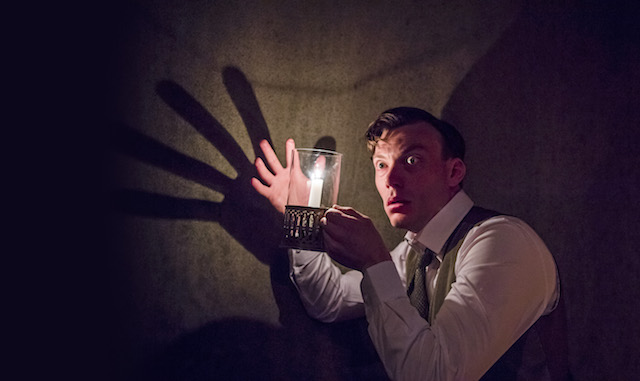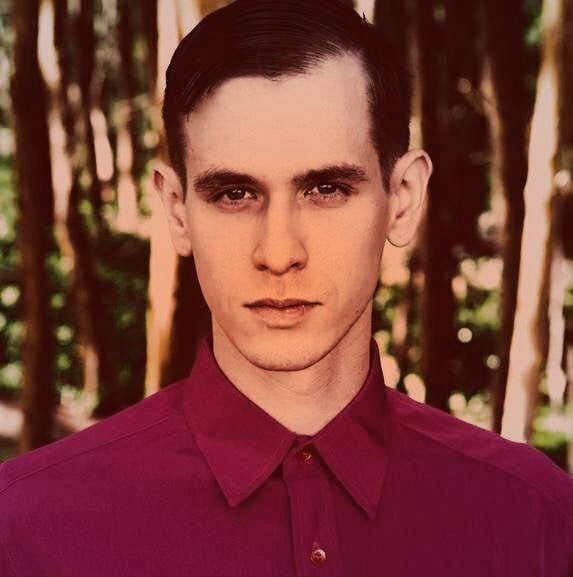A look at the origins of The Woman in Black: Still Scary After 30 Years
Published on 12 September 2018
Last updated on 4 October 2018
The brilliant, yet terrifying, ghost story based on Susan Hill’s The Woman in Black celebrates an astounding 30 years on the West End stage. It is currently one of the longest-running plays in West End history, second only to The Mousetrap, and has been scaring audiences at the Fortune Theatre since 1989. After reaching this special milestone one can’t help but wonder, “Why does The Woman in Black continue to pack audiences after all these years?” The answer is simple: novelty.

Pictured: 'The Actor' (played by Mark Hawkins) casts an unsettling shadow puppet in a chilling scene from The Woman in Black
The Woman in Black represents a unique adaptation of its source material and provides a completely different experience than the film or book. The origins of the play date back to 1987 in the coastal town of Scarborough where the Artistic Director of the Stephen Joseph Theatre, Robin Herford, realised that there was still grant money left to spend. With his boss, Alan Ayckbourn, on extended holiday and Christmas just around the corner, Herford decided to stage a low-budget ghost story in the bar of the theatre. He asked Stephen Mallatratt, the venue’s in-house playwright, to draft up a play with a caveat that the total cost for the production, including costumes and set design, could not exceed £1,000. He also stated that there was only enough room in the budget to pay four actors.
Mallatratt was not pleased with the limitations but eventually came up with an intriguing plan. First, he asked Herford whether he had heard of Susan Hill’s 1983 novel The Woman in Black, who later went home to read the book in one sitting overnight. When he met up with Mallatratt the next day, he was concerned that it had too many characters and he wouldn’t be able to afford that many actors. That’s when Mallatratt revealed his ingenious plan: the characters from the story would be played by just two speaking actors and the set would feature a minimalist design that utilised the entire theatre as the show’s set.
This novel idea derived from an otherwise complex novella really paid off. ***The Woman in Black* **was completely sold out on its opening night at the Stephen Joseph Theatre and it enjoyed a successful, three-week run. Over a year later in January 1989, the smash-hit thriller premiered in London at the Lyric Hammersmith before eventually transferring to the Fortune Theatre, where it continues to haunt London audiences to this day.
What makes The Woman in Black so petrifying? A lot of factors, actually. A set that extends past the stage and uses the entire theatre space to evoke a feeling of no escape combined with low air-conditioning temperatures and a lack of music help create an immersive, four-dimensional experience. Theatregoers will feel a chill run down their spine as characters begin to creep up behind them.
The Woman in Black follows junior solicitor Arthur Kipps (played by Mark Hawkins), who is asked to attend the funeral of Mrs Alice Drablow, the sole inhabitant of the Eel Marsh House. Little does he know of the tragic secrets that lie behind the house's shuttered windows. When Kipps catches sight of a young woman dressed in black at the funeral, a series of horrifying events begin to unfold and the locals refuse to speak of the woman or reveal her purpose. In 2012, the play was adapted into a financially successful film starring Harry Potter actor Daniel Radcliffe as Arthur Kipps.
After three spectacular decades, The Woman in Black continues its West End reign of terror and is currently booking at the Fortune Theatre until 3 July 2019.
Book your tickets now to see this edge-of-your-seat show and happy screaming!
Purchase your Woman in Black tickets.

By Nicholas Ephram Ryan Daniels
Ephram is a jack of all trades and enjoys attending theatre, classical music concerts and the opera.

